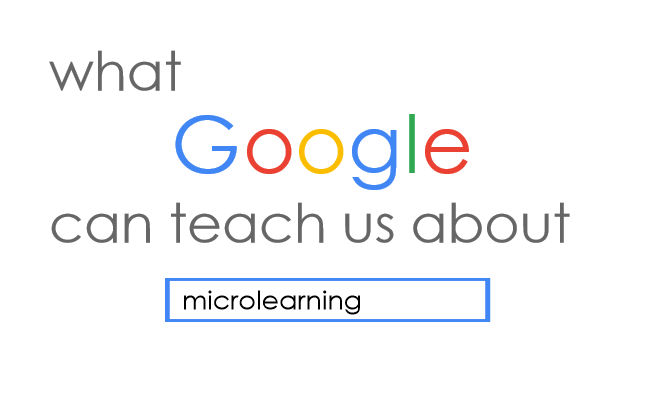What Google Can Teach Us About Microlearning
Google, Wikipedia, and social media have dramatically changed the way we learn, and they are at least partly responsible for our current emphasis on microlearning. As we plan microlearning strategies, we would do well to remember 3 of the principles that have made Google successful.
- Keep it simple.
In an age when the temptation to add widgets to websites can be almost overwhelming, Google has stuck with a blank white page adorned only by a one-word logo, a search box, and two buttons. Similarly, microlearning is best when it follows the Albert Einstein adage to “make things as simple as possible, but no simpler”. If we want to accomplish real behavior change in a 5-minute web module, everything in that module must be dedicated to the same purpose. The media, the activities, the text – all must be focused on the same goal. Even worthwhile objectives like “learner engagement” detract from microlearning because the format creates its own engagement. Google works because it’s a user-friendly way to find what we need quickly. Microlearning must be the same. - Keep it action-oriented.
Most websites measure their effectiveness by how long they keep readers on the page, but everything on a page of Google search results is designed to help you leave the site. This clear path to action makes it very easy to accomplish your goal, and microlearning should have the same focus on behavior. When learners are on the job, they are often confronted with tasks they aren’t quite sure how to accomplish. An effective microlearning curriculum should be designed around individual tasks, providing tutorials that help users file a report or assemble a tool. If learners know your training curriculum will help them get better at the skills they need in their jobs, they will seek it out. And if each tool is a concise, focused experience, they will return again and again. - Keep it connected.
Google’s search algorithm is famously secret, but one of its main components is PageRank, which assigns part of its value based on the links a page has with others. If my site is linked to by other highly valued sites (those with a lot of traffic, for instance), it raises the profile of my site. Effective microlearning, likewise, cannot exist in isolation. We need to create catalogs of brief, focused training, and much of the strength of that training will come from the connections each module makes to others. A series of microlearning modules on the sales process, for instance, will more effectively change behavior if they build on each other and lead to a holistic view or summative assessment. This doesn’t mean we should create a progression of courses that can’t be altered; rather, microlearning should enable learners to use specific modules when they will be most useful. A connected curriculum will give learners the broad-based skill set they need to be successful.
There will always be a need for longer, more complex training, but microlearning offers significant advantages in how we present learning and development opportunities to our teams. And we can make that microlearning most effective by incorporating the principles that drive the way learners use Google to train themselves.
Want to know more about successful microlearning techniques? Download this free eΒook to learn how microlearning drives results by empowering learners.









